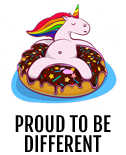you should idealy shade with complimentary colors for more realistic shades, instead of using burn and dodge, try using just a brush with a complimentary color, set the flow and opacity pretty low >20%, start with the shadowed area's biggest, i guess shape, and work your way smaller layering up as you get darker, if that makes sense.
from what little digital coloring ive done, i find its easiest to start out with your clean inked b&w pic, and before you scan it in, shade it a bit, dont even need to actually fade from dark to light, just use light shading, then you go thru with the smudge tool, and fade your shadows out, smooth them over, get them where you think its looking pretty good, then adjust the levels darker, and resmudge, until you have it just right, then using a layer per color, go in and just do overlays, i find setting the layer mode to multiply is best, i use about a 25% opacity and flow, and build up my colors that way, you can add some complimentary colors very lightly to your shaded areas to get a more natural tone, when you have your color layers how you like them, then you slap a layer on top of everything as your highlight layer, and honestly, with the way you colored it, you can get away with using white with a very low opacity and flow for the highlight because with all the layers set to multiply, or overlay, sometimes color burn/dodge, the colors dont look like they have white highlights, they just are a lighter shade of color. hope i helped, just play around, and watch some speed paintin vids on youtube
from what little digital coloring ive done, i find its easiest to start out with your clean inked b&w pic, and before you scan it in, shade it a bit, dont even need to actually fade from dark to light, just use light shading, then you go thru with the smudge tool, and fade your shadows out, smooth them over, get them where you think its looking pretty good, then adjust the levels darker, and resmudge, until you have it just right, then using a layer per color, go in and just do overlays, i find setting the layer mode to multiply is best, i use about a 25% opacity and flow, and build up my colors that way, you can add some complimentary colors very lightly to your shaded areas to get a more natural tone, when you have your color layers how you like them, then you slap a layer on top of everything as your highlight layer, and honestly, with the way you colored it, you can get away with using white with a very low opacity and flow for the highlight because with all the layers set to multiply, or overlay, sometimes color burn/dodge, the colors dont look like they have white highlights, they just are a lighter shade of color. hope i helped, just play around, and watch some speed paintin vids on youtube
